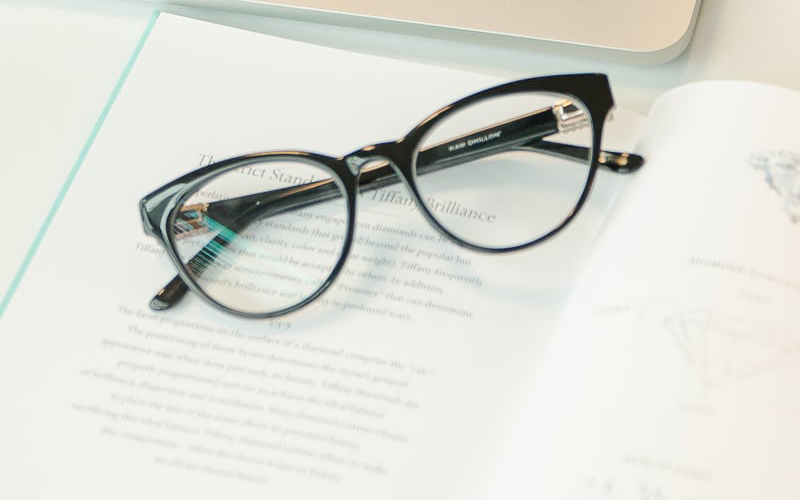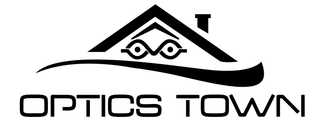If you’ve noticed small print getting harder to read, or you’re holding your phone farther away just to see clearly, it might be time for reading glasses. But grabbing any pair off the shelf isn’t enough—choosing the right reading glasses strength is key for clear vision and comfort.
In this guide, Optics Town walks you through the signs you need reading glasses, how to test your strength at home, and when to see an eye doctor. Let’s help you find your perfect fit.

What Does “Reading Glasses Strength” Mean?
Reading glasses strength is measured in diopters, which tells you how much the lens magnifies nearby text. The higher the number, the stronger the magnification.
Most reading glasses range from:
-
+1.00 to +1.50 – Good for light reading or early signs of presbyopia
-
+1.75 to +2.25 – Helpful for ages 45–55 or regular readers
-
+2.50 to +3.00 – Ideal for ages 55+, or those with more noticeable near-vision decline
✅ Tip from Optics Town: Start with a lower strength and work your way up until text appears sharp without straining your eyes.
Why Choosing the Right Reading Glasses Strength Matters

Wearing the wrong strength glasses can lead to:
-
Blurry vision
-
Eye fatigue
-
Headaches
-
Poor posture while reading
Using the correct diopter strength will help you:
-
See small print more clearly
-
Reduce eye strain
-
Enjoy reading again—comfortably
Signs You Might Need Reading Glasses
Here are common signs that it’s time to start shopping for reading glasses:
👓 1. Blurry Close-Up Vision
If you’re struggling to read text on your phone, book, or food labels, that’s a red flag.
👀 2. Eye Strain or Fatigue
Tired eyes, especially after screen time or long reading sessions, could mean you need magnification help.
📖 3. Holding Reading Material at Arm’s Length
Do you keep pulling your book or phone farther away to focus? That’s a clear sign of presbyopia—a normal part of aging vision.
💢 4. Frequent Headaches
Your eyes might be working too hard. The right glasses can reduce strain and help prevent headaches.
How to Find the Right Reading Glasses Strength
✅ 1. Try a Reading Strength Chart
Optics Town recommends starting with a printable reading strength chart. Hold it at your normal reading distance (about 14–16 inches) and see which lines appear the clearest. Each line is labeled with a diopter strength to guide you.
✅ 2. Test Over-the-Counter Readers
Visit your local Optics Town store or any nearby optical shop to try different strengths in person. Use a book, your phone, or small print packaging to test clarity.
Reading glasses usually increase in +0.25 diopter steps, so take your time and compare.
✨ Optics Town Tip: Don’t settle for the first clear pair—try a few strengths and choose the one that feels the most natural.
✅ 3. Use Online Vision Tools (Non-Branded)
There are many free tools online that simulate a strength chart on your screen. They can give you a quick estimate of what strength you may need, but results vary. Use them as a starting point—not a replacement for a real exam.
✅ 4. See an Eye Care Professional
If you’re experiencing constant eye strain, double vision, or if your eyes have different prescriptions, visit an optometrist. They’ll use a phoropter to test your near vision and recommend the ideal strength based on your unique needs.
Common Reading Glasses Strengths Explained
| Strength (Diopters) | Best For |
|---|---|
| +1.00 to +1.50 | Age 40–45, light magnification |
| +1.75 to +2.25 | Age 45–55, regular readers |
| +2.50 to +3.00 | Age 55+, stronger correction |
👁️🗨️ If one eye is stronger than the other, or if you have astigmatism, ask Optics Town about custom lenses.
Conclusion
Getting the right reading glasses strength makes a big difference. It helps you read without strain, reduces headaches, and brings comfort back to your everyday tasks.
Whether you’re just starting with +1.00 readers or you need a stronger magnification, Optics Town is here to help. Visit us in-store or online to explore a wide range of styles and strengths to match your needs.




